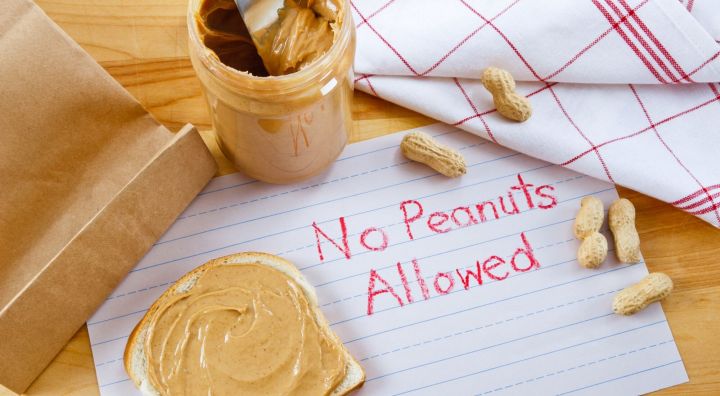People eat for reasons other than satisfying hunger, and those reasons play a great role in whether we eat too much or not. Experts discuss the role of the environment in our appetites and how we may use it to stay slim. Hosted by: Nancy Benson.
Guest Information:
- Dr. Brian Wansink, Director, Cornell University Food and Brand Lab and author, Slim By Design: Mindless Eating Solutions for Everyday Life
- Dr. Barbara Rolls, Professor of Nutritional Sciences, Penn State University and author, The Ultimate Volumetrics Diet: Smart, Simple, Science-Based Strategies for Losing Weight and Keeping It Off
15-07 Mindless Eating
Nancy Benson: How many times did you use the expression, “My eyes were bigger than my stomach? We’ve all occasionally piled our plates with succulent goodies that proved a bit more than our stomach can handle. If we do it too often our waistlines show the results. Well, it turns out there’s a reason we often have little self-control. It’s because most of us do indeed eat with our eyes and not our stomachs.
Brian Wansink: Our stomachs, it appears, are very crude measurement tools. Stuff a couple more muffins down there, a few more spoonfulls of cereal. And it’s not sensitive to measure these small differences. So, what we typically do is we determine when we’re full by sight — by our eyes.
Nancy Benson: Dr. Brian Wansink is Director of the Cornell University Food And Brand Lab and author of Slim By Design: Mindless Eating Solutions For Everyday Life. He says that rather than listening to our bodies, we get cues from our environment that tell us when, what, and how much to eat.
Brian Wansink: One habit that goes on is that we become incredibly influenced by our environment. If something distracts us while we’re eating, we can end up eating something we don’t really like that much without realizing it. For instance, we ended up doing a study with people who are going into a theater, and these are people who had just finished eating lunch. They weren’t hungry, and we gave them popcorn, either a medium sized bucket or a large size bucket that was five days old. It was terrible popcorn. And even though these people were given food that was terrible, even though they had just eaten, people ended up eating about 35% more popcorn from these big buckets. Because it’s a cue that told them it was reasonable, normal and appropriate to eat more food — because it’s in front of them.
Nancy Benson: But even when we know about these environmental cues, Wansink says our eating behavior won’t change.
Brian Wansink: We can take the smartest people in the world and say “If you have a bigger bucket of popcorn, you’re going to eat more,” and that person would say “Ah, no I can control myself,” but they won’t. The best thing to do is either buy the smaller bucket or share it with a friend. Or, as you eat the popcorn, just take what you want and put it in the seat next to you or two seats away, and if you really want it again and again and again, you can reach for it. But at least that’s enough to interrupt this mindless eating script.
Nancy Benson: Wansink says the key to eating less is to change our environment. Not our minds. Let’s take the office candy bowl, for instance. Wansink did a study where he placed a candy bowl on an office desk and refilled it every night, counting how many pieces had been eaten.
Brian Wansink: We found that if it was sitting on somebody’s desk, they ended up eating about 9 candies a day which is like 225 calories. If we moved it just 6 feet away, they ended up eating 100 calories less.
Nancy Benson: But not all researchers agree that changing the size of your plate will help to change the size of your waistline.
Barbara Rolls: It’s not big portions that are making us overweight, it’s big portions of foods that are very dense in calories.
Nancy Benson: That’s Barbara Rolls, Professor Of Nutritional Sciences at Penn State University and author of
The Ultimate Volumetrics Diet: Smart, Simple, Science-Based Strategies For Losing Weight And Keeping It Off.
Barbara Rolls: We need to be eating big portions of fruits and vegetables, low calorie density foods, broth based soups etc. They help to fill us up, and they help to control hunger, so portion control and portion size are very complex. And I think all this “eat less” message and blaming everything on portion size is not correct.
Nancy Benson: Rolls says we can fool ourselves into eating fewer calories by filling up on bulky, water-dense foods that make us feel full.
Barbara Rolls: Water is the biggest component of the foods that we eat, and so water has the biggest impact on the portions that we get to eat. So, if you have a magic ingredient in food, it’s water because it’s giving you weight and volume with no calories. The key is to tuck fruits and vegetables into your day wherever you can and cutback on fat wherever you can. I don’t advocate really low fat cause if you don’t like the food then you won’t eat it, but fat packs twice as many calories into a portion as carbohydrates or protein.
Nancy Benson: So if water is the key, can’t we just drink a lot of it while we’re eating to make us feel full?
Barbara Rolls: Drinking water doesn’t work, and that’s one of the big myths out there that the water needs to be incorporated into the food.
Nancy Benson: Rolls says simply take your favorite recipe and add lots of vegetables to it. It’ll look like the same big portion on a normal-sized dinner plate, but you’ll take in fewer calories. But then, it’ll take more food to cover today’s plates. And that’s part of the problem.
Brian Wansink: I was talking to an antique dealer one time and he said that people will bring dinner plates from 1940, and they’ll say “I like these little salad plates do you have any real dinner plates?” And it’s kind of funny when he said when he says, “no, that is a dinner plate,” one of them went back and returned a few minutes later with a serving platter and said “how many more of these do you have?”
Nancy Benson: Rolls says that from birth, we pay attention to biological cues and eat appropriate amounts in response to the body’s need. But that changes at an early age. She describes a study on four –year- old children conducted by one of her colleagues, Dr. Leeann Birch at Penn State University.
Barbara Rolls: She divided them into two groups. One group was taught to listen to their tummies. They were taught what a full tummy feels like, and the other group was taught to clean their plates–to pay attention to the environmental cues, if you like. And then she tested them to see how well they regulated in response to a first course that had a certain number of calories. The kids who had learned to pay attention to their tummies adjusted really well. The kids who learned to pay attention to what was on their plate did not. So that indicates that at least at four years of age we’re learning we can learn to focus on our bodies too, so we can use this to try to teach kids to pay more attention to the biology.
Nancy Benson: in other words, don’t force kids to clean their plates. Instead, encourage them to stop eating when they’re full, even if there’s food left on the plate.
Barbara Rolls: People do need to be aware that their eating environment has a big impact on both what they eat and how much they eat, so they need to attend to all these various cues, and they need to make sure that they decide how much is on their plates and how much they eat. Don’t leave it to somebody else cause then you’re almost certainly gonna end up overeating.
Nancy Benson: You can find the books, Slim By Design by Brian Wansink and
The Ultimate Volumetrics Diet by Barbara Rolls through a link on our website radiohealthjournal.org.
Our production directors are Sean Waldron and Nick Hofstra. I’m Nancy Benson.
Sign up to receive email updates
Enter your name and email address below and I’ll send you periodic updates about the podcast.











Leave a Reply